Art World
Huge! Why Brazil’s ‘Christ the Redeemer’ Is So, So Big
The massive sculpture is more than just a symbol of Christianity.
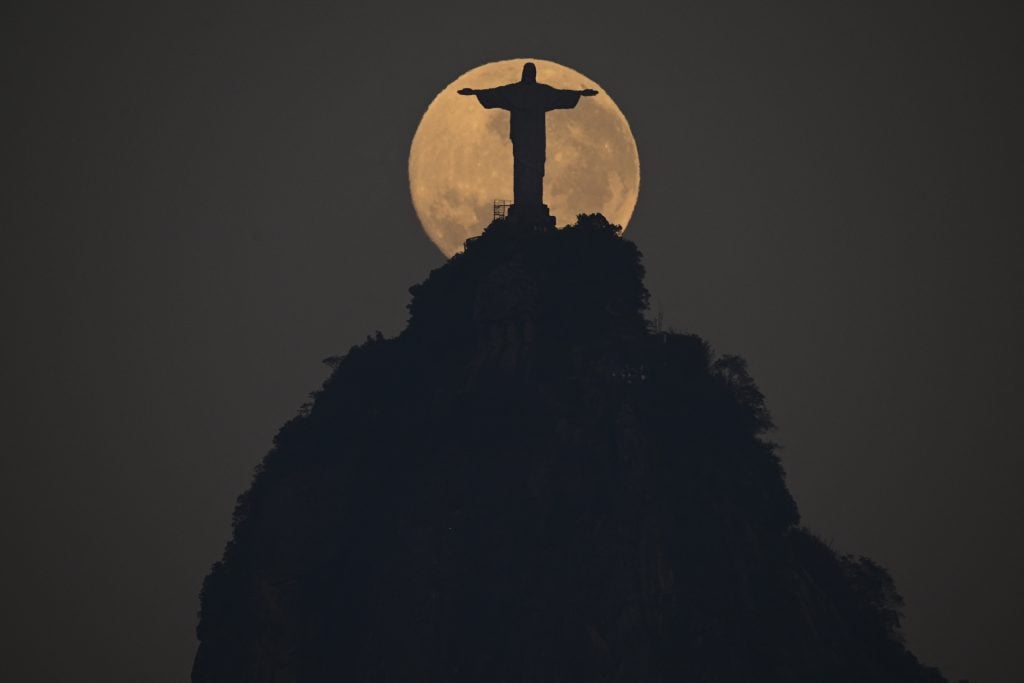
The Rio de Janeiro, Brazil-based Christ the Redeemer is one of the largest and most iconic statues of Jesus in the world. Its outstretched arms, spanning 92 feet, extend over the city. Standing at 98 feet tall (plus a 26-foot pedestal), it has become a symbol of Christianity’s presence and power. But why is it so big?
One of the main reasons for its size is to ensure that it can be seen from almost anywhere in Rio. The city’s expanse is vast, spanning roughly 471 square miles (1,221 square kilometers) with a population of over 13 million in the greater metropolitan area. Rio’s landscape is varied, a dramatic blend of mountains, hills, urban developments, and beaches—from Sugarloaf Mountain, Copacabana, Ipanema, and the Tijuca Forest, one of the largest urban forests in the world. Perched atop Corcovado Mountain, which is around 2,300 feet above sea level, Christ the Redeemer watches over the city and is visible from nearly every angle. It serves as a constant reminder for Rio’s inhabitants to look upwards—both literally and spiritually.
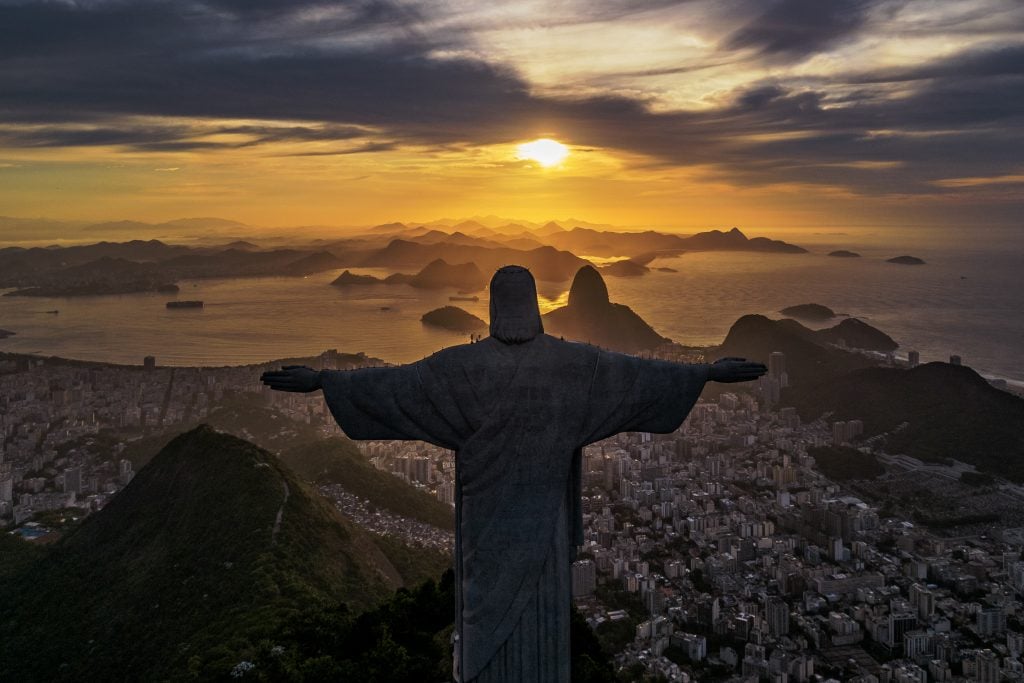
The sun rises in front of the Christ the Redeemer in Rio de Janeiro, Brazil on March 29, 2023. Photo: Florian Plaucheur/AFP via Getty Images.
The size of religious monuments like Christ the Redeemer is no coincidence. Throughout history, the Catholic Church has been a dominant spiritual and political force. Monumental churches and cathedrals, like St. Peter’s Basilica in Vatican City and Notre-Dame in Paris, were often built to display the Church’s immense power and influence. Large-scale structures, from ancient pyramids to massive statues, have long been used to evoke awe and reverence. Similarly, the towering Christ the Redeemer statue is designed to inspire a sense of wonder, faith, and unity among its viewers.
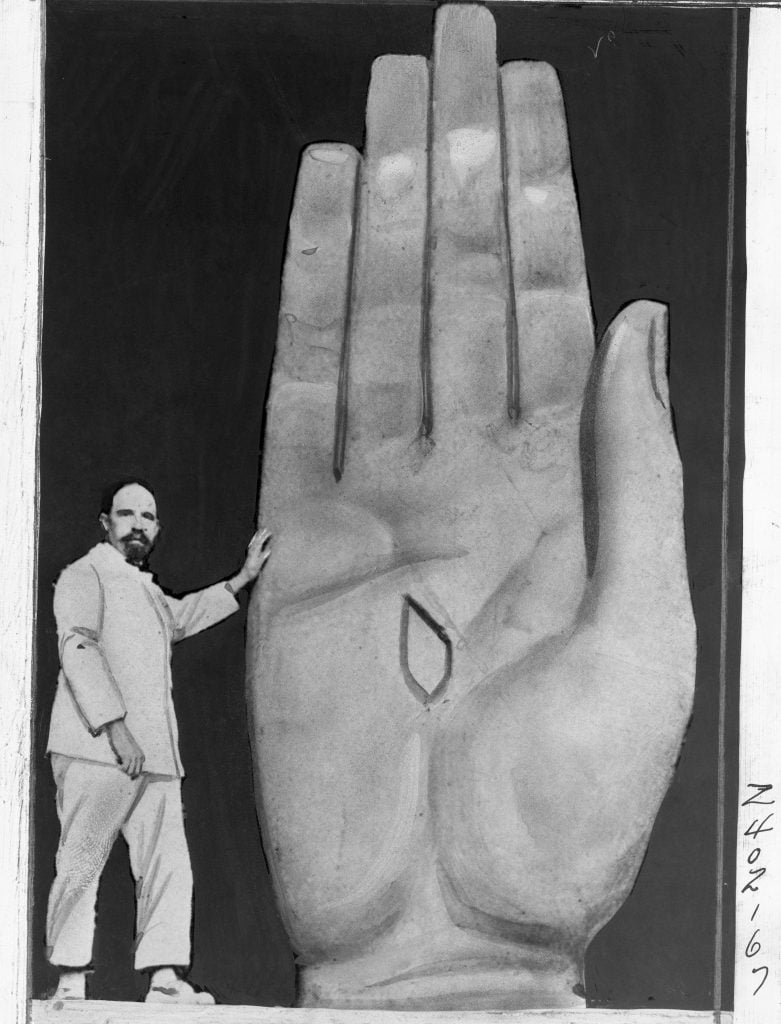
Polish sculptor, shown at work on the hand of the giant statue of Christ which he is completing and which will be placed in Rio De Janeiro Bay, South America.
The statue was commissioned during a time of rising Christianity in Brazil, bolstered by European influence. In the 1850s, a Catholic priest named Pedro Maria Boss proposed the idea of erecting a Christian monument to crown Rio. Though the idea didn’t gain traction at the time, it gained traction again in 1921 when the Brazilian Catholic Church saw an opportunity to create a unifying national symbol for the country’s centennial celebration of independence in 1922. The design of Christ with open arms, as if embracing both the city and its people, was chosen after other ideas, such as one where Christ held a globe and cross, were considered.
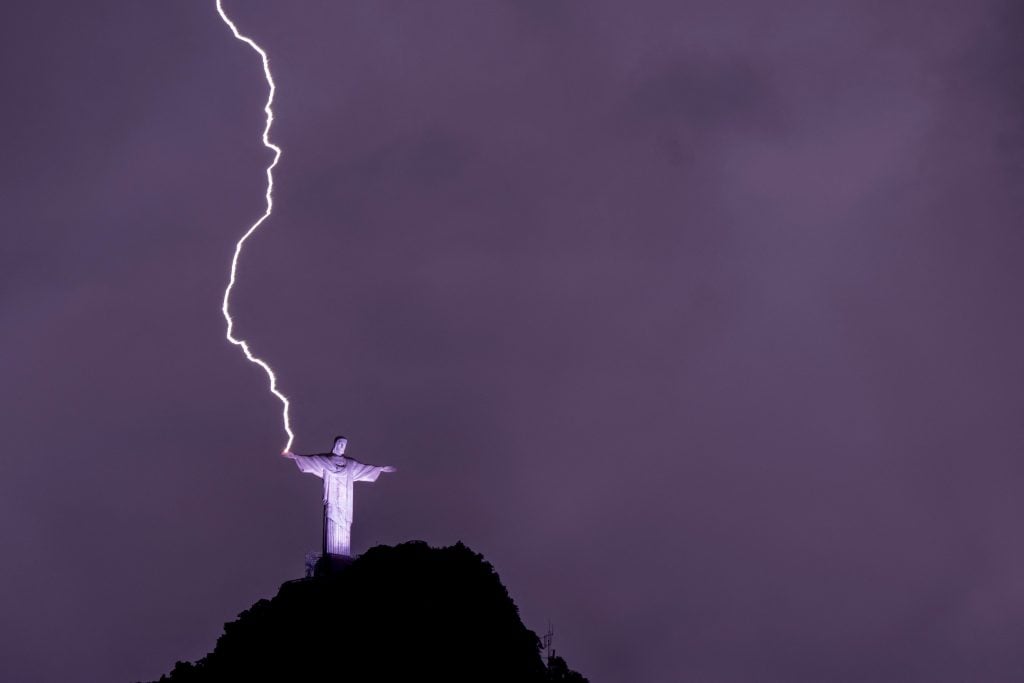
A bolt of lightning hits the hand of the Christ the Redeemer statue at the Corcovado mountain in Rio de Janeiro, Brazil, on February 21, 2023. Photo: Mauro Pimentel/AFP via Getty Images.
Building such a colossal statue in the 1920s was no easy task. The materials—concrete for durability and soapstone for weather resistance—were carefully selected to withstand Rio’s unpredictable climate. French sculptor Paul Landowski was commissioned to design the statue, and Brazilian engineer Heitor da Silva Costa oversaw the construction. Materials to build the statue were transported up the mountain by a specially built railway.

A group of Santa Claus sing during a visit to the Christ The Redeemer statue in Rio de Janeiro, Brazil on June 16, 2023, in the sidelines of the National Santa Claus Convention organized by Brazil’s School of Santa Claus. Photo: Mauro Pimentel /AFP via Getty Images.
When Christ the Redeemer was completed in 1931, it became an instant cultural and religious icon, quickly growing into a symbol of Rio and a landmark recognized around the world. Over the years, the statue has faced harsh weather, including lightning strikes, and has undergone several restorations. It is also a beacon of culture, frequently lit up with colored lights and projected with images to reference significant international events. When the iconic soccer player Pelé died in 2022, the statue was enrobed in green and yellow lights to mimic the Brazilian flag; it was lit up in the colors of the German flag to mark the day of unification between East and West Germany in 1990; and a cadre of Santa Clauses attending a convention made a pilgrimage to the statue in 2023. An image of Pope Francis graced the statue ahead of his book release in May 2024, and during the health crisis of 2020, photographs of first responders reminded the public of the importance of unity.
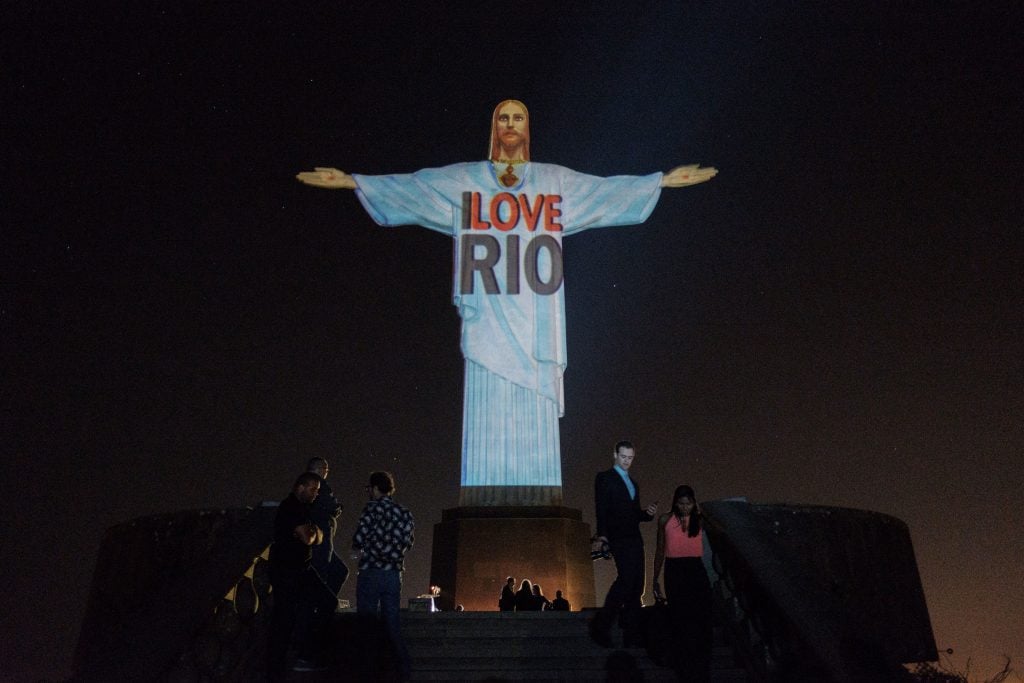
A projection is made over the statue of Christ the Redeemer as part of the launching of the new informative website “iloverio.com” that tells about Rio de Janeiro’s various attractions in English ahead of the Rio 2016 Olympic Games. Photo: Yasuyoshi Chiba /AFP via Getty Images.
Christ the Redeemer remains a powerful symbol of faith, national pride, and an artistic and engineering achievement. It’s not just big for the sake of being big—it’s a reminder that when it comes to monumental works, size can elevate meaning, impact, and significance. The colossal statue, visible from nearly every corner of Rio, continues to inspire millions of visitors and locals, proving that sometimes, size really does matter.
Sometimes, archaeology gets big. In Huge! we delve deep into the world’s largest, towering, most epic monuments. Who built them? How did they get there? Why so big?





